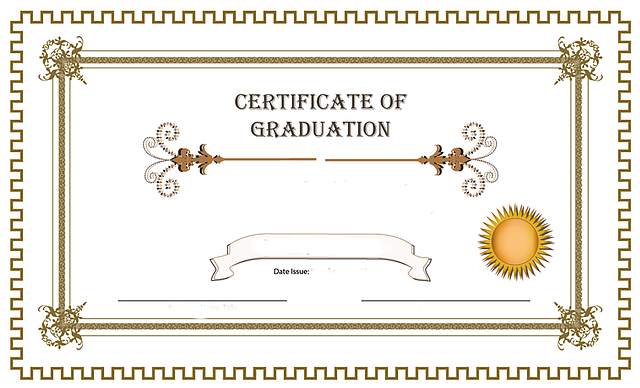If you are interested in medical coding and billing or you want to advance your current medical coding or billing career, you can consider obtaining certification.
Professionals who hold certifications have more benefits, such as increased salary and job opportunities.
Depending on the level of education you’re seeking, certification programs may differ.
They also depend on the amount of time and money you can invest.
Medical coding and billing advancement options can include a certificate, diploma, degree, or training course.
In addition, you may consider an alternative route to the traditional education experience and prepare for your medical billing and coding certification online.
Article Table of Contents
Path 1: Certificate or Diploma Program
Both certificate and diploma programs for medical coders and billers start with postsecondary education available to students.
These programs differ.
Certification takes less time but has slightly more restrictive curricula that programs for a diploma.
Certificate programs are beneficial for students focused on careers and wishing to join the workforce as soon as possible.
Those who seek a more extended curriculum may consider a longer diploma program.
- Completion time – 4-12 months.
- Cost – $800-$4,500.
- Subjects Covered: Students study medical coding and billing, electronic medical records practices, clinical terminology, ethics and law, confidentiality, physiology, anatomy, and managed care.
- Program Outcome: Students studying for medical coding and billing certificates know how to submit claims to insurance companies, navigate billing software and insurance plans, and process bills.
They learn the basics of medical coding.
After graduation, they can start a career as medical coders, health information clerks, and medical record coordinators.
Path 2: Associate Degree Program
Another path to obtaining your medical billing and coding certification is enrolling in an associate program.
This can be more expensive than a certificate or diploma and can take more time, but it also opens up more career opportunities.
Many employers prefer candidates that hold an associate’s degree over certificate or diploma holders.
Besides, an associate’s degree can be required for some professional certifications, such as the Registered Health Information Technician exam and the certified professional biller certification.
Associate degree holders can continue their education and apply the credits they earned toward a bachelor’s degree.
- Completion time – 2 years.
- Cost – $6,000-$13,000.
- Subjects Covered: additionally to the basic courses that diploma and certificate programs cover, associate degrees require students to take general courses, such as math, English, natural and social sciences, etc.
- Program Outcome: students who complete associate degrees are familiar with medical coding and billing procedures and can assign medical codes for a variety of healthcare services accurately.
They can work for insurance companies or medical clinics.
Path 3: BA Program
Those who pursue a career in medical billing and coding can use a bachelor’s degree as an additional qualification.
Students can earn a bachelor’s degree in healthcare administration or health information management.
This four-year degree provides comprehensive training and knowledge that prepares the candidate to start their career.
Generally, bachelor’s degrees last for four years and can be more expensive than an associate degree or certificate or diploma program.
However, it provides in-depth training that employers expect from their candidates.
Graduates are more qualified for higher employment levels, such as managerial positions.
- Completion time – 4 years.
- Cost – $36,000-$120,000.
- Subjects Covered: Bachelor’s programs in this field generally cover health informatics and management.
Students are taught the basics of collecting, protecting, and processing patient healthcare information.
They also study the administrative procedures in healthcare settings. - Program Outcome: Holders of bachelor’s degrees in health information management or healthcare administration can work as health information technicians and medical service managers.
Path 4: Training Courses
Some organizations, such as AAPC, offer preparatory courses for medical coding and billing certification exams.
These courses are designed for students who aim at becoming a certified professional coder (CPC), certified inpatient coder (CIC), or certified outpatient coder (COC).
These medical coding courses are online and take about four months or less to complete.
Students who prefer classroom-based education can also find AAPC courses in their area.
These are suitable for students with a strong knowledge of such topics as medical terminology or anatomy.
Students who took these courses and passed the certification exams to become CPCs can find employment.
Later, they can go for an associate’s or bachelor’s degree if they want to advance their education and career.
Medical Billing and Coding Online Programs
Many medical billing and coding programs are available online.
Students can find online programs that will provide them with the necessary tools to integrate their learning into their busy lives.
Despite the certificate, degree, diploma, or training course you are taking to prepare for the certification exam, you can acquire this education through distance learning.
There are more convenience and flexibility to online courses than in traditional program.
Online students can access and complete the course at their own pace according to their schedules.
By this, they can fit the schoolwork around their commitments, such as family or work.
Besides, many students who study online enjoy the freedom to learn from home compared to the need to relocate or commute to campus.
If you decide to take your medical coding and billing program online, watch out for programs that last shorter than the industry standard.
You should be also suspicious about programs that offer you to work from home without experience.
When looking for online programs, be sure to check the accreditation of the program.
Accredited Medical Billing and Coding Online Programs
Often, the requirements for medical billing and coding certification and licensing specify that the credits you earn must come from an accredited program to qualify.
Besides, some financial aid companies require that recipients enroll in accredited programs to ensure that their education is high-quality, and they have employment opportunities after graduation.
So employers often verify that applicants obtained a diploma, degree, training, or certificate from an accredited program before they hire them.
The main organizations that accredit medical coding and billing programs include the Commission on Accreditation for Health Informatics and Information Management Education (CAHIIM), American Health Information Management Association (AHIMA), and the AAPC.
CAHIIM has a database of accredited health informatics and health information management degrees, which you can search through.
Which Medical Billing and Coding Certification Is Right for Me?
The type of credential to pursue medical coding and billing depends on the type of work you’re looking for.
Particular professionals, such as certified outpatient coders or certified professional coder, do medical coding, specifically the first one, in outpatient settings.
Certified professional billers deal with billing functions, such as submitting and going through the insurance claims.
Practice managers, medical auditors, and compliance officers ensure that offices of physicians work profitably and efficiently according to the governmental regulations for billing and coding.
Certified Professional Coder (CPC):
According to the AAPC, this certification is the most recognized for medical coders in the healthcare industry.
It is also the most common.
CPCs have a thorough understanding of all code sets and can use the right codes for services performed in medical settings.
They understand healthcare administration and the regulatory and ethical practices related to medical insurance claims and reimbursement.
Certified Outpatient Coder (COC):
This certification demonstrates that coders understand medical terminology, coding guidelines, and anatomy.
Students have to comprehend payment methodologies, the use of various code sets for outpatient settings, and regulatory compliance.
These coders usually work in hospital outpatient billing and coding departments or ambulatory surgical centers.
They are proficient in evaluation and management, pathology, radiology, surgical services, anesthesia, and medicine.
Certified Professional Biller (CPB):
These professionals know all areas of the revenue cycle.
Patients and healthcare providers rely on them to submit claims to insurers and process payment and compensation.
CPBs have to adhere to private payer policies as well as governmental regulations.
Being the liaison between the insurers and doctors, medical billers are vital since the process of creating and submitting a claim, resolving its denial, or issuing appeals can be time-consuming and complex.
Certified Professional Medical Auditor (CPMA):
These professionals understand the standards for medical record and documentation guidelines, coding and reimbursement concepts, medical record auditing abstraction, statistical sampling methodologies, and category risk analysis and communication.
They can work in a variety of healthcare settings ensuring profitability and compliance of physician practices.
Certified Physician Practice Manager (CPPM):
This certification is suitable for those who have experience in other healthcare areas and would like to start in a physician practice management.
These professionals understand all aspects of medical office administration.
They should demonstrate proficiency in the revenue cycle, compliance regulations, human resources, health information, and general business processes.
The exam covers medical office accounting, healthcare reform, and physician reimbursement.
Certified Professional Compliance Officer (CPCO):
A CPCO creates, implements, and maintains healthcare compliance programs for practices of physicians.
This is a multiple-step process, including risk assessment, internal compliance reviews, staff training, audits, and education.
Physicians need these programs to manage Medicaid and Medicare abuse and fraud.
Medical Billing and Coding Certification FAQS
How Long Does it Take to Become a Medical Coder?
The time necessary to become a medical coder depends on the level of education you are looking for.
Certificates can take only four months, while diploma programs may take a year on average.
If you are pursuing a degree, you will find out that an associate’s degree takes two years, while bachelor’s, four years.
AAPC training courses usually take only four months.
How Much Does a Medical Coder Make a Year?
The salary of certified medical coders and billers depends on a few factors.
The level of education usually impacts your income.
Candidates with an associate’s or bachelor’s degrees earn more.
According to the AAPC salary survey, credentials influence salaries as well.
Those who hold certifications have a higher income.
Besides, experience also matters.
The survey demonstrated that higher salaries are available in a larger group and hospital settings, as well as in higher populated areas.
How Do I Maintain My Medical Billing and Coding Certification?
Certification in medical billing and coding is valid for two years.
After that, to maintain the certification status, professionals should complete a certain number of continuing education units every two years.
Each two-year period requires you to complete 36 CEU.
Different certifications require education in various areas.
CEUs should come from vendors approved by the AAPC.
Read the full guide: How to Become a Medical Biller and Coder




